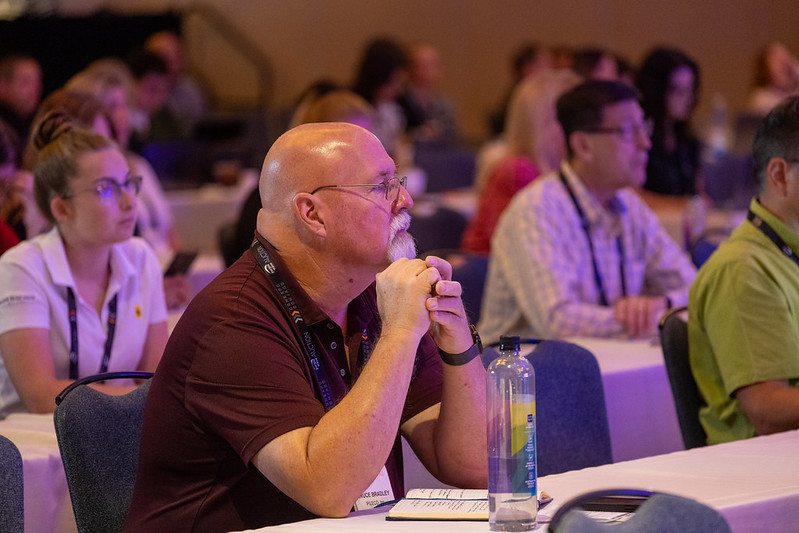By Julie Davis, AEM Senior Director of Workforce and Industry Initiatives, SHRM-CP —
It’s no secret manufacturers across the nation are struggling to fill open positions, and workforce shortages are leading to slower production capacity. With all that in mind, what will it take for the industry to reconsider talent pools they’ve long disregarded?
For one reason or another, manufacturers often overlook one of the largest – and most underutilized – pools of talent available today: the formerly incarcerated. Nearly one-third of the U.S. population possesses a criminal record. Over 10,000 ex-offenders are released from state and federal prisons each week, averaging more than 650,000 people annually.
Unfortunately, when ex-offenders return home from serving their time, opportunities to find stable work are extremely limited at best, said Brandon Butler, president of lab Operations at Portland, Oregon-based lens manufacturer Pacific Artisan Labs, and an ex-offender himself who works diligently to help those incarcerated and paroled find employment within the optometric space.
“Companies are afraid. They’re struggling for talent, and they’re struggling to find committed people to come to work for them. Meanwhile, offenders are deemed by the courts to serve a sentence. After they’ve done so, they’ve paid back their debt to society. Unfortunately, when they do come out of prison, society doesn’t treat them like they’ve paid their debt to society. If you get a felony, it’s a life sentence. It hangs with you for the rest of your life.”
So, what does this have to do with manufacturing?
Over $23 million dollars was awarded in 2022 to improving reentry education and employment outcomes for the formerly incarcerated. That’s good news for the ever-widening manufacturing skills gap, as vocational training offered in prisons serves as a catalyst toward bridging the talent gap and offering a positive economic path forward for second-chance citizens.
AEM's Workforce Solutions Toolkit provides easy digital access to workforce best practices designed empower your organization regardless of size, resources, location or sector. Learn more.
What many might not know is the incarcerated possess access to in-prison facility training, which can include skills such as welding, maintenance, mechanics, AutoCAD and construction, among many others. With that in mind, among the first steps organizations in need of skilled labor should consider taking is contacting their respective state department of justice to determine if – and where – vocation training is being conducted in their state.
In addition to understanding if there are manufacturing skills training programs nearby, manufacturers should strongly consider connecting with a regional or local re-entry support program. These programs are offered by a variety of state, non-profit, and religious organizations, and they center around supporting second-chance citizens as they find employment. These organizations may help with housing, transportation, resume building, job applications, and even making sure that people have the work clothes they need to get acclimated once released.
Although many manufacturers may be nervous about participating in second-chance hiring, surveys indicate:
- 80% of Americans support expanding second-chance hiring practices
- 85% of HR professional believe that workers with criminal records perform their jobs as well or better
- 64% of millennials will not take a job without a connection to Corporate Social Responsibility
The Society of Human Resource Management and the Manufacturing Institute also offer in-depth resources and case studies associated with hiring second-chance citizens, how to get started, and how to build a culture of acceptance while widening organizational talent pools, decreasing turnover, accessing incentives and staying competitive. Additionally, manufacturers can find a wealth of case studies from businesses and second-chance citizens.
Successfully tapping into the ex-offender labor pool begins with a willingness on the part of manufacturers to destigmatize ex-offenders and their criminal pasts, said Butler.
“Take the stigma away from the fact that these people have been in prison. There's a lot of concern on the part of manufacturers that it will disrupt the business, knowing that someone is coming in out of prison or has felonies. Let them prove themselves and put together good reviews. Don't stigmatize it just because others do.”
Labor demographics clearly indicate that the labor market will continue to be constrained. As the manufacturing industry looks to the future, it will need to diversify its workforce, and include women, minorities and second-chance citizens, if it’s ever going to address the labor challenges it faces. There’s no better time than right now for industry professionals to review policies and procedures (as well as personal biases) when it comes to finding ways to fill the talent shortage. After all, providing second chances to those who have paid their debt to society by connecting them to good jobs in manufacturing is not only good corporate citizenship, it’s good business, said Butler.
“It's actually low-risk, high-reward. Once other employees start seeing ex-offenders as just normal people that will work just as hard, if not harder than everyone else, then they’ll be more inclined to give them a second chance. There's no reason organizations should avoid making it a part of the overall hiring process, because doing so will pay off in the end.”
For more perspectives from AEM staff and industry leaders, subscribe to the AEM Industry Advisor.





